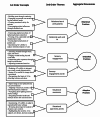Navigating artificial intelligence in home healthcare: challenges and opportunities in nursing wound care
- PMID: 40537760
- PMCID: PMC12180238
- DOI: 10.1186/s12912-025-03348-7
Navigating artificial intelligence in home healthcare: challenges and opportunities in nursing wound care
Abstract
Background: Artificial intelligence (AI) is increasingly introduced into healthcare, promising improved efficiency and clinical decision-making. While research has mainly focused on AI in hospital settings and physician perspectives, less is known about how AI may challenge the values that guide nursing practices. This study explores nurses' perceptions of wound care in municipal home healthcare and the opportunities and challenges with the integration of AI technologies into their practices.
Methods: An exploratory qualitative study using semi-structured interviews was conducted with 14 registered nurses from two municipalities in Sweden. Participants were recruited through purposive sampling, and data were collected through individual interviews, either in person or via video call. Interviews were transcribed verbatim and analyzed inductively, inspired by the Gioia methodology. This approach allowed themes to emerge from the data while maintaining close alignment with participants' perspectives. In a subsequent phase, the data were interpreted through the lens of Mol's Logic of Care to deepen understanding of the relational, embodied, and adaptive nature of wound care. Ethical approval was obtained, and the study adhered to the Consolidated Criteria for Reporting Qualitative Research (COREQ).
Results: Three interconnected dimensions emerged from the data: relational, embodied, and adaptive practices. Nurses emphasized the importance of relational work in wound care, highlighting the trust and continuity necessary for effective wound care, which AI-driven automation might overlook. Embodied practices, such as sensory engagement through touch, sight, and smell, were central to wound care, raising nurses' concerns about AI's ability to replicate these nuanced judgments. Adaptive practices, including improvisation and situational awareness in non-standardized home environments, were presented as challenges for AI integration, as existing digital systems were perceived as rigid and often increased administrative burdens rather than streamlining care.
Conclusions: Home healthcare nurses' perspectives highlight the complex interplay between technology and caregiving. While AI could support documentation and diagnostic processes, its current limitations in relational, sensory, and adaptive aspects raised the nurses' concerns about its suitability for wound care in home settings. Successful AI integration should account for the realities of nursing practice, ensuring that technological tools enhance the embodied, relational, and adaptive dimensions of wound care. Applying Mol's Logic of Care helps illuminate how good care emerges through ongoing, situated practices that resist full automation. Future research could further explore how AI aligns with professional nursing values and decision-making in real-world care settings.
Clinical trial number: Not applicable.
Keywords: Artificial intelligence; Digitalization; Home healthcare; Machine learning; Municipal care; Nursing; Nursing practice; Wound care.
© 2025. The Author(s).
Conflict of interest statement
Declarations. Ethics approval and consent to participate: This study was approved by the Swedish ethical review authority (Approval No. 2022-05837-01). The study followed the Declaration of Helsinki [51]. Informed consent was obtained from all participants involved in the study. Data were stored according to data protection regulations. Consent for publication: All authors have approved the submitted version of the article and have agreed to be personally accountable for their contributions and ensure that questions related to the accuracy or integrity of any part of the work, even ones in which the author was not personally involved, have been appropriately investigated and resolved. Competing interests: The authors declare no competing interests.
Figures
Similar articles
-
Perspectives of Health Care Professionals on the Use of AI to Support Clinical Decision-Making in the Management of Multiple Long-Term Conditions: Interview Study.J Med Internet Res. 2025 Jul 4;27:e71980. doi: 10.2196/71980. J Med Internet Res. 2025. PMID: 40613609 Free PMC article.
-
Signs and symptoms to determine if a patient presenting in primary care or hospital outpatient settings has COVID-19.Cochrane Database Syst Rev. 2022 May 20;5(5):CD013665. doi: 10.1002/14651858.CD013665.pub3. Cochrane Database Syst Rev. 2022. PMID: 35593186 Free PMC article.
-
Home treatment for mental health problems: a systematic review.Health Technol Assess. 2001;5(15):1-139. doi: 10.3310/hta5150. Health Technol Assess. 2001. PMID: 11532236
-
Integrative review of artificial intelligence applications in nursing: education, clinical practice, workload management, and professional perceptions.Front Public Health. 2025 Aug 1;13:1619378. doi: 10.3389/fpubh.2025.1619378. eCollection 2025. Front Public Health. 2025. PMID: 40823249 Free PMC article.
-
How lived experiences of illness trajectories, burdens of treatment, and social inequalities shape service user and caregiver participation in health and social care: a theory-informed qualitative evidence synthesis.Health Soc Care Deliv Res. 2025 Jun;13(24):1-120. doi: 10.3310/HGTQ8159. Health Soc Care Deliv Res. 2025. PMID: 40548558
References
-
- Ali O, Abdelbaki W, Shrestha A, Elbasi E, Alryalat MAA, Dwivedi YK. A systematic literature review of artificial intelligence in the healthcare sector: benefits, challenges, methodologies, and functionalities. J Innov Knowl. 2023;8(1):100333.
-
- Ali S, Akhlaq F, Imran AS, Kastrati Z, Daudpota SM, Moosa M. The enlightening role of explainable artificial intelligence in medical & healthcare domains: A systematic literature review. Comput Biol Med. 2023;166:107555. - PubMed
LinkOut - more resources
Full Text Sources
Miscellaneous


